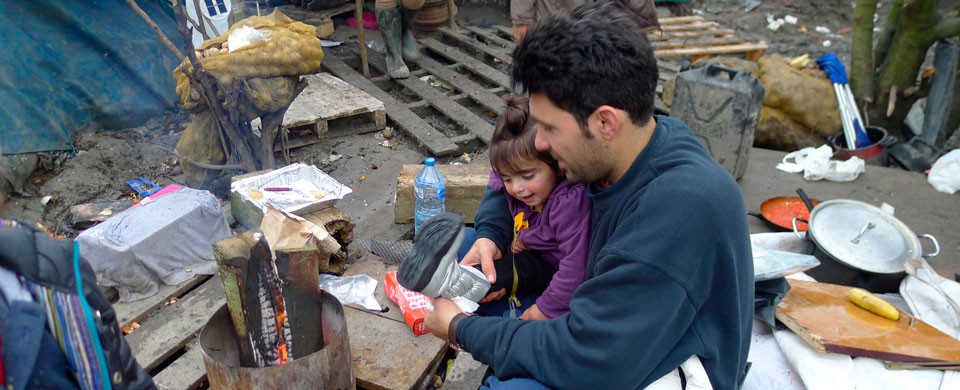Hats off to Gary Lineker – the issue isn’t numbers but resources
Gary Lineker has been riding Twitter tackles as nimbly as he handled lunging defenders in his footballing days.
After calling The Sun’s coverage of child refugees “horrendously racist” in a tweet last week, the BBC presenter took kicks from Islamophobics, sidestepped sacking calls and remained defiant over the weekend with an ironic comment about “bloody foreign” footballers.
Amongst it all, the tweet that caught my eye was one saying “we’re full-up”. It’s a phrase people motivated by prejudice use, but it plays to genuine concerns – reflected in the Brexit vote – about pressures on schools and housing and a perceived threat to jobs and wages.
But are we really full-up? I presume the phrase means, literally, we’ve reached a point where the country can’t cope with more people. But is there actually a finite number or, like the capacity of a lift, does it depend on how powerful the engine is and the way the supports are configured?
Demographic trends suggest the latter. We tend to think of London as being full-up, but actually its population peaked at 8.6 million in 1939 and has been lower than that for the last 75 years, only now just reaching the peak again.
In Wales, Merthyr is an area that has also had its ups and downs. In its 19th century heyday as a global iron producer, more than 50,000 people lived in the town. But, when competition eroded its position, thousands left to take their skills abroad (with John Hughes famously founding the city of Hughesovka – now Donetsk – in the Ukraine).
These days Merthyr is back above the 50,000 mark, but the number of people per square mile is still only half that of its modern equivalent, Palo Alto, the economic powerhouse better known as Silicon Valley.
I sense you saying the comparison is ludicrous, but in a way that’s the point. The techie, 70,000-strong Palo Alto of today would have seemed ludicrous in 1950 to the 25,475 residents of what was then a sleepy university town.
And, in turn, Silicon Valley drives the booming San Francisco bay area economy where, over the same period, the population has nearly trebled from 2.7m to 7.7m and changed from being predominantly non-Hispanic white – themselves migrants in the previous century – to 24% Hispanic, 23% Asian, 6% African-American and only 42% white (non-Hispanic).
Such rapid population growth – exceeding anything we have seen in contemporary Britain – might be expected to generate huge tensions, but affluence is an amazing antidote to insecurity about migration.
Poorer areas, on the other hand, are much more susceptible to fear-mongering. They feel ‘full-up’ – even though population may not be growing and densities may be lower – simply because they are fed-up.
That’s why The Sun’s choice of adjectives for Lineker – “luvvie” and “millionaire” – was so malign. The paper knows that decades of de-industrialisation and neglect, followed by a heavy dose of austerity, have left communities across Britain feeling resentful towards the so-called metropolitan elite. The language they chose was calculated to enlist that anger for their Xenophobic campaign.
But knowing The Sun is poisonous doesn’t solve the problem. The difficulty now is the immigration debate is so toxic that it is almost impossible to discuss calmly how many refugees we should take, what should happen to EU citizens living here or how we should ‘control our borders’ more generally.
But let’s start with some small steps, and one of them should be accepting that how different towns and regions feel about migration is linked to how starved of resources and economic opportunity they are.
Theresa May told the Tory party conference that she would “put the power of government squarely at the service of ordinary working-class people”.
For that to be credible, she needs to deliver the goods in terms of investment in infrastructure and services that will give hope to the areas left-behind since the 1980s.
In the case of Merthyr and the South Wales valleys, she could start by ensuring Brexit doesn’t lead to a shortfall in funding for the Metro.
Faster, more frequent rail services are not a panacea, but they would give more people access to the growth Cardiff is seeing and make the whole region much more attractive to investors – and who knows where that could lead.
Steve Howell
This article is Steve’s monthly column for WalesOnline and the Western Mail newspaper.
Steve is also author of Over The Line, a novel telling the story of an Olympic poster girl facing a doping crisis, which is available on Kindle (£1.99), Kindle Unlimited (free to subscribers) and in paperback (£7.99) via Amazon or post free via the secure PayPal facility on this website – ORDER
Photo credit: iStock / copyright: AnjoKanFotografie

